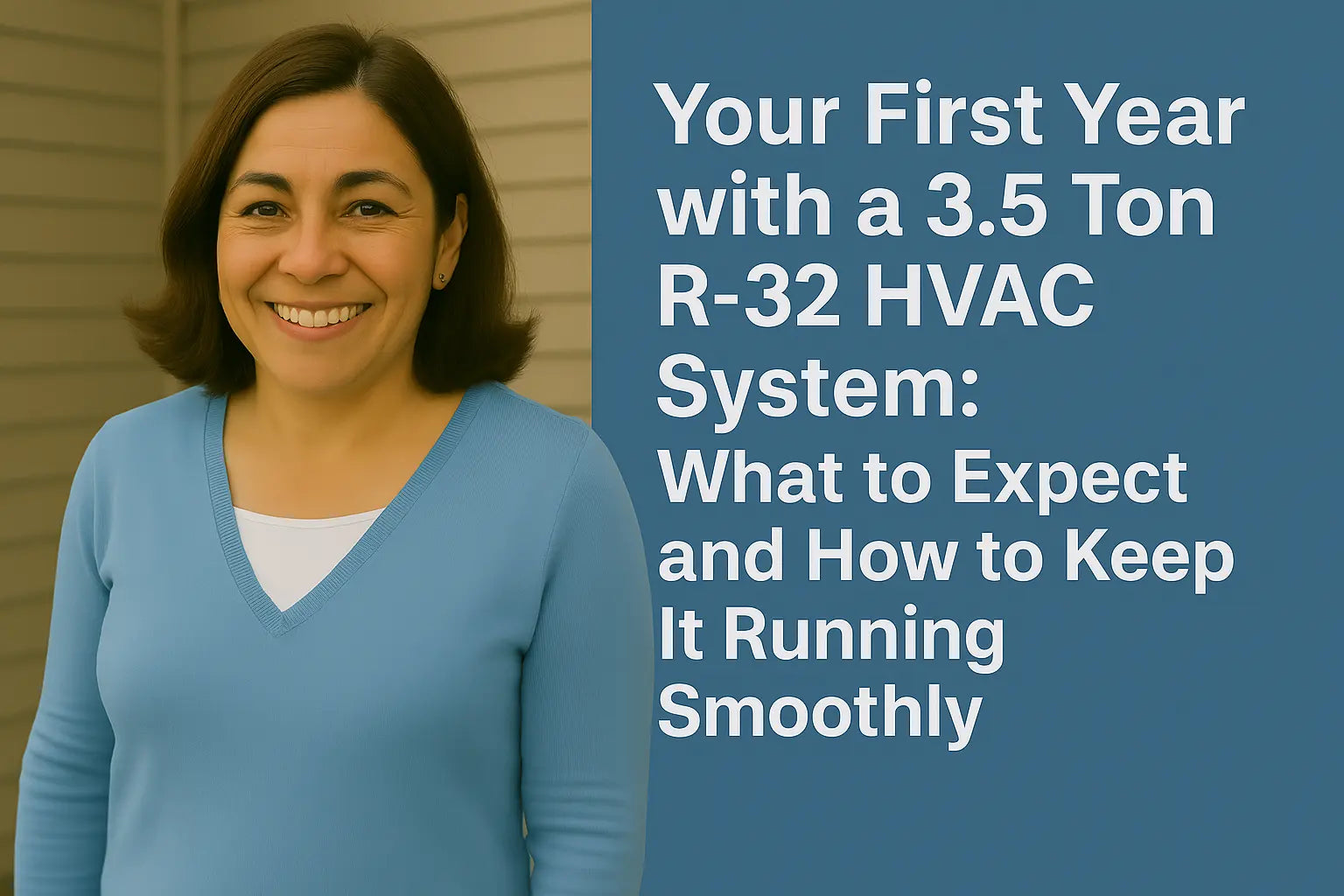Hey Friend! It’s Samantha 👋
So you’ve made the leap and installed a 3.5 ton R-32 AC and gas furnace system. High five! 🎉 Whether this is your first full HVAC system or you’re upgrading from something older and clunkier, the first year with your new unit is the time to get things dialed in.
I’ve been through this myself—setting up reminders, tracking performance, and yes, figuring out what’s normal and what’s not. Let me walk you through what your first year should look like, month by month, so you can keep your system running beautifully and avoid surprises.
Let’s make this year a total comfort win.
Month 1: Register That Warranty and Learn Your System
As soon as the system is installed:
-
Register your warranty with the manufacturer. Most require this within 30–60 days. Miss it and you could lose valuable coverage.
-
Get familiar with your thermostat settings, especially if you upgraded to a smart or programmable one.
-
Ask your installer for a quick walkthrough of:
-
How to shut off power in an emergency
-
Where the air filter is
-
What maintenance schedule they recommend
-
And don’t forget to file away your user manuals. Or better yet, download PDFs and keep them in a Google Drive folder like I do. 😉
Need help registering your unit? Here’s Goodman’s registration portal.
Months 2–3: Monitor Energy Use and Performance
Your 3.5 ton R-32 system should run smoothly right out of the gate. But now’s the time to:
-
Track your utility bills — compare to last year (even if you had a different system)
-
Pay attention to noise — new systems should be quiet. Any buzzing, whistling, or rattling could indicate loose parts or airflow issues
-
Feel for even airflow — walk around your home with the system running. All rooms should feel relatively balanced
If anything seems off, don’t panic—but do call your installer to come back and verify the setup.
Want a primer on normal AC sounds vs. problem ones? HVAC.com’s noise guide is super helpful.
Months 4–6: Seasonal Maintenance and First Filter Change
By now, your system’s getting into a rhythm. Before the next season change:
-
Change the air filter (every 1–3 months depending on pets, allergies, and lifestyle)
-
Clean your outdoor condenser — gently rinse off pollen, leaves, or dust buildup
-
Inspect duct vents for dust or furniture blockages
-
Schedule your first seasonal checkup with a licensed HVAC tech
I recommend setting a reminder in your phone for filter changes and checkups. Small habits = big HVAC wins!
Months 7–9: Evaluate Heating Performance (If It’s Cold Out)
When it’s time to switch to heating mode, here’s what to expect:
-
Your 3.5 ton system should provide strong, consistent heat
-
Natural gas furnaces heat quickly—no waiting around like a heat pump
-
Check that your thermostat is still set correctly for heating schedules
-
Don’t ignore a burning smell the first time the heat kicks on—it’s usually dust on the heat exchanger and should clear quickly. If it doesn’t, call for service
Need help prepping for winter? The Department of Energy offers a great home heating checklist.
Months 10–12: Optimize and Plan for Year 2
Your system should be humming along by now. Here’s what I suggest doing as your first year wraps up:
-
Schedule a professional inspection and tune-up to ensure everything is still working at peak efficiency
-
Review your energy savings from before and after the upgrade
-
Check with your utility provider or DSIRE to see if you qualify for energy rebates or tax credits
-
Ask your tech to check refrigerant levels, blower motor function, and heat exchanger integrity
And if you had any issues during the year—like airflow imbalances or thermostat quirks—this is your moment to get them fixed under warranty.
Is R-32 Still a Good Choice? (Spoiler: Yes!)
Throughout the year, I’m sure you’ll come across articles or questions about R-32 safety, performance, or regulations. Don’t stress—it’s still one of the most future-friendly and efficient refrigerants available today.
-
It has a lower Global Warming Potential than R-410A
-
It uses less volume for the same cooling power
-
It’s aligned with the EPA’s AIM Act HFC phase-down plan
Final Thoughts from Samantha 🌟
The first year with your 3.5 ton R-32 AC and gas furnace system should feel like a breath of fresh, filtered, temperature-perfect air. 💨❄️🔥 With regular maintenance, a little observation, and the right habits, this system can serve your home efficiently for 15–20 years.
And if you’re still in the shopping phase—or thinking about upgrading another property—don’t forget to browse The Furnace Outlet’s matched 3–5 ton R-32 systems. These bundles make setup simple, efficient, and budget-friendly.
Want more installation and troubleshooting tips for your 3.5-ton systems? Visit my guide right here!
Here’s to a comfortable year, smart savings, and fewer HVAC surprises.
— Samantha, Home Comfort Advisor







